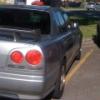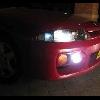Traction Control In R34 4-door?
Announcements
-
Similar Content
-
Latest Posts
-
94535063-cdf8-47e4-8433-705a86178369.mp4
-
Just thought they where clunky in low speed, like tight traffic. Anyhow, they are out of my price range.
-
Jax Tyres this Monday morning. Front lifted 15mm Back lifted 12mm Quote1, $175 per tyre + wheel alignment. Quote2, $660 inc wheel alignment. paid $298 for the lot.
-
Finally have an update on this Rack came in this week so I did a test fit. You do need the S chassis bushings since the rack is 5mm thinner than the R33 rack. The main issue I foresaw and ran into was one of the hardlines not lining up properly with there it's meant to on the rack. After some gentle coercing and bending very slightly, I managed to get it to fit without any kinks and keeping the hardline pretty much in all of the factory mounting positions. I did have to unbolt all of the soft mounts to move the line around so I could snake it out and bend it safely but it looks good to me for now. I'll update when the rack is fully bolted in and functioning.
-
I hear this thread needs an update following its adventures last Wednesday!
-







Recommended Posts
Create an account or sign in to comment
You need to be a member in order to leave a comment
Create an account
Sign up for a new account in our community. It's easy!
Register a new accountSign in
Already have an account? Sign in here.
Sign In Now